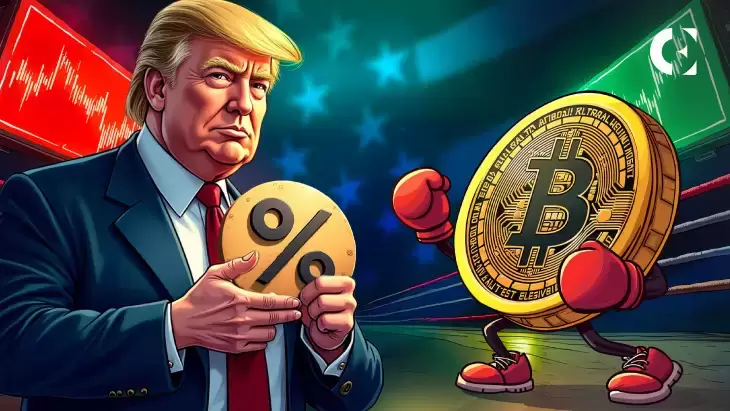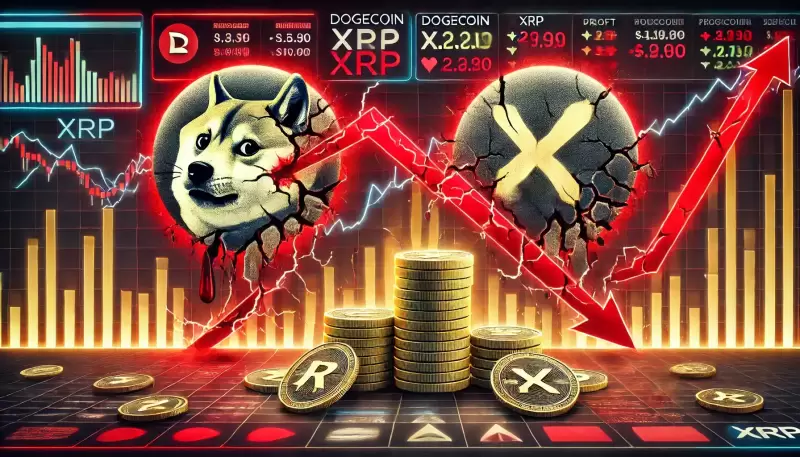 |
|
 |
|
 |
|
 |
|
 |
|
 |
|
 |
|
 |
|
 |
|
 |
|
 |
|
 |
|
 |
|
 |
|
 |
|
Cryptocurrency News Articles
As Markets Brace for the Impact of President Trump's Tariff Announcements, Experts Point to Regulatory Clarity as Bullish Catalyst
Apr 02, 2025 at 07:20 pm
Despite a global macro backdrop filled with uncertainties—from proposed sweeping U.S. tariffs to stubborn inflation and elevated rates—digital assets have shown remarkable resilience.

Despite a challenging global macro backdrop, digital assets have shown resilience as markets prepare for the impact of President Trump’s tariff announcements.
Experts told Benzinga that regulatory clarity is the clearest bullish catalyst, while a looming correction in equities is the most prominent downside risk.
What HappenedDespite a global macro backdrop filled with uncertainties—from proposed sweeping U.S. tariffs to stubborn inflation and elevated rates—digital assets have shown remarkable resilience.
But analysts and industry leaders warn that the current rally may be masking deeper tensions.
Speaking with Benzinga, Mike Cahill, CEO of Douro Labs, a key contributor to the Pyth Network (PYTH/USD) Network, believes the optimism in markets is short-term in nature.
"Markets rallying into the tariff announcement reflect a classic case of short-term optimism winning out over long-term uncertainty," said Cahill.
For Cahill, the real story isn't about euphoria or complacency, but selective positioning by experienced traders. "Calling it ‘nothing ever happens’ is premature."
Cahill sees regulatory clarity, particularly around stablecoins and tokenized assets, as the clearest positive catalyst ahead.
"That's the green light institutions are waiting for to go all in."
On the flip side, he warns that a macro shock, driven by high rates and escalating trade tensions, could rapidly sap liquidity and hurt sentiment across risk assets, including crypto.
"A broader pullback in equities would also spill over into crypto, especially in the current market cycle where crypto traders are largely an extension of the broader institutional fabric."
Another industry expert, Gadi Chait, Investment Manager at Xapo Bank, framed the recent market drop as part of a broader tug-of-war between long-term conviction and short-term anxiety.
"Bitcoin (BTC/USD) investors have been bracing for today's announcement, so a price drop comes as no surprise," said Chait, referring to anticipated trade actions from the Trump administration.
For Chait, Bitcoin remains a long-term bet on sovereignty and scarcity, unaffected by momentary volatility. "We've been here before, and we'll likely be here again, but Bitcoin's long-term trajectory remains undeniable."
The price of Bitcoin has recently fluctuated between $76,600 and $94,500, stabilizing around $85,000 on Tuesday.
Chait cautioned that a break below $76,600 could shift sentiment decisively, but until then, the broader range remains intact.
Also Read: Coinbase CEO Brian Armstrong Advocates For Stablecoins: ‘Consumers Deserve A Bigger Piece Of The Pie’
Ryan Lee, Chief Analyst at Bitget Research, highlighted how geopolitical tension could actually amplify Bitcoin's appeal.
"Trump's proposed tariffs potentially supercharge Bitcoin's appeal by shaking confidence in fiat currencies like the U.S. dollar," said Lee.
Lee also noted that stagflation risk—rising prices without accompanying growth—might drive more traders toward decentralized assets as traditional safe havens falter.
"We'd expect a spike in Bitcoin demand—perfect for our users to ride the wave using spot, futures, or our staking options."
Why It Matters: Still, not all analysts are interpreting the current moment as a full-blown crypto bull run.
Xia Yumin, CTO at Galxe, noted that gains in the space have largely been isolated to Bitcoin, with Ethereum (ETH/USD) and most altcoins lagging.
"If we examine the market at a micro level, the significant gains are mainly concentrated in Bitcoin," Yumin observed.
While Bitcoin may challenge prior highs in the coming quarter, Ethereum will need more technical or sentiment-driven momentum to breakout.
Looking ahead, Yumin identified macroeconomic policy—specifically U.S. interest rates—as a defining force for crypto valuations.
"Interest rate cuts as anticipated during each FOMC meeting will continue to elevate BTC's valuation as a scarce asset."
He also noted a clear and present risk: a downturn in U.S. equities.
"In a crypto market that currently lacks its own independent narrative, any downturn in equities will likely drag crypto down with it."
As traders await more details on the Trump administration's "reciprocal tariffs," estimated to impact nearly $3 trillion in imports, the financial markets are sending mixed signals.
U.S. bond yields remain elevated, and expectations for a Fed rate cut remain tepid.
The CME FedWatch tool currently shows markets pricing in an 85.5% chance of the Fed holding rates steady through May.
Disclaimer:info@kdj.com
The information provided is not trading advice. kdj.com does not assume any responsibility for any investments made based on the information provided in this article. Cryptocurrencies are highly volatile and it is highly recommended that you invest with caution after thorough research!
If you believe that the content used on this website infringes your copyright, please contact us immediately (info@kdj.com) and we will delete it promptly.


























































